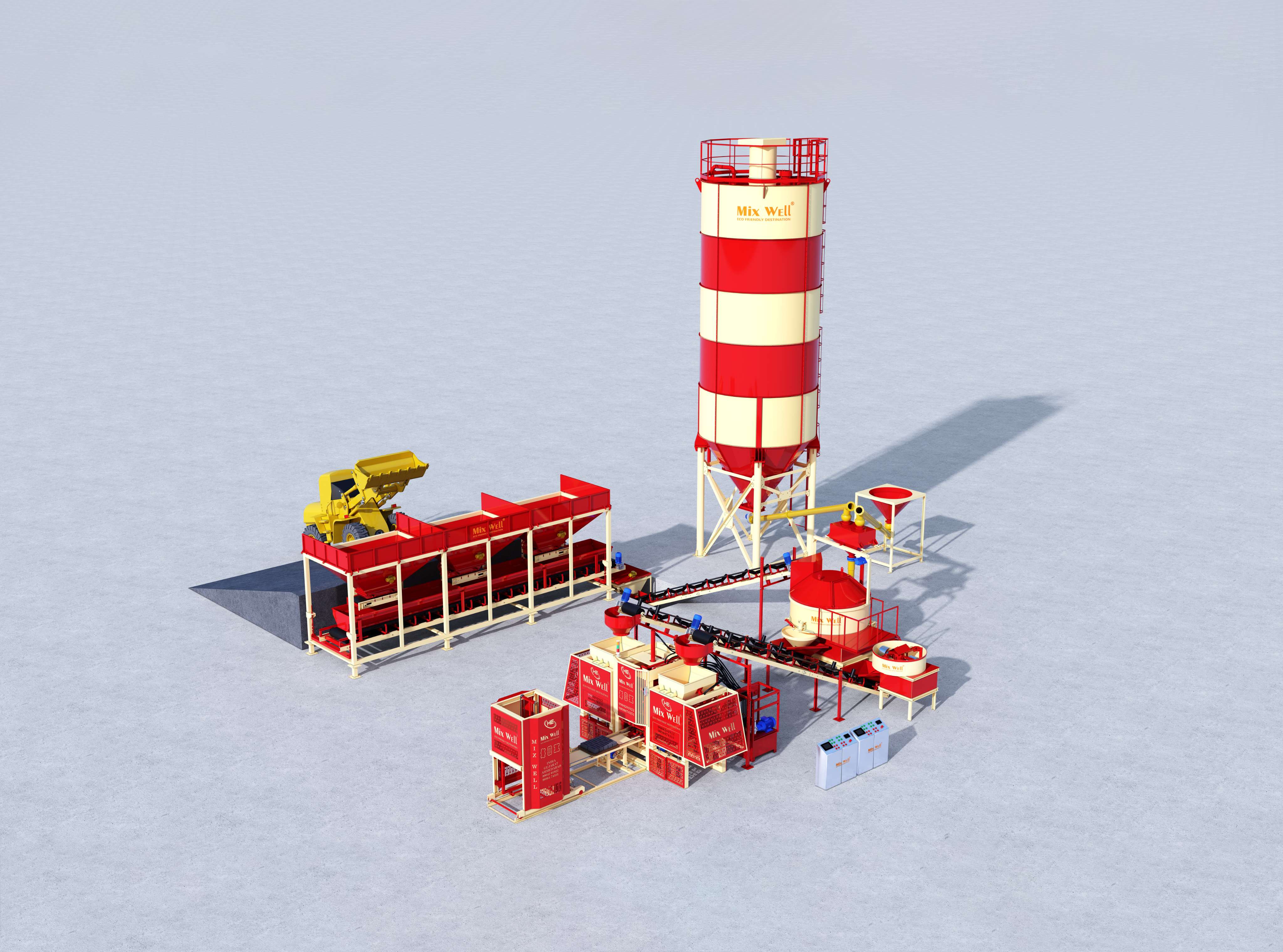
Here is a comprehensive and detailed guide on the FAM-1800 Double Mixer Fly Ash Brick Making Machine, covering everything from how its made, its working principle, uses, importance, advantages, FAQs, and industry applications, followed by a conclusion.
The FAM-1800 Double Mixer is a semi-automatic or fully automatic fly ash brick making machine equipped with dual pan or planetary mixers. It is specifically designed for medium to high-volume brick production, offering continuous, efficient mixing and pressing of fly ash, cement, and aggregates.
The dual mixer configuration allows for simultaneous preparation of multiple batches, which increases the throughput and keeps the pressing unit constantly supplied, reducing idle time.
| Component | Function |
|---|---|
| Double Mixers (Pan or Planetary) | Continuous mixing of raw materials |
| Conveyor Belt System | Transports mixed material to press |
| Brick Press Unit | |
| Hydraulic Power Pack | Drives the pressing mechanism |
| PLC Control Panel (optional) | Controls batching, mixing, pressing (in auto model) |
| Pallet Feeder & Brick Ejector | Facilitates moulding and ejection of bricks |
| Steel Frame | Heavy-duty construction for durability |
Design Engineering
Machine designed using CAD for accurate fitting and flow efficiency.
Frame Fabrication
Mixer Construction
Fabricated twin mixing pans fitted with gearboxes and blades.
Hydraulic System Assembly
Assembly & Integration
Pressing unit connected to mixers and conveyors for synchronized operation.
Electrical Wiring
All motors, sensors, and control panels wired.
Testing & Commissioning
Loading Raw Materials
Simultaneous Mixing
Both mixers operate in parallel, preparing multiple batches continuously.
Material Transfer
Conveyor belts feed the press unit with ready mix.
Hydraulic Pressing
Material is compressed into brick moulds using hydraulic/vibratory action.
Ejection & Palletizing
Bricks are ejected and stacked for curing.
Curing
| Feature | Specification |
|---|---|
| Production Capacity | 18,00020,000 bricks/day |
| Mixer Capacity | 300500 kg per batch per mixer |
| Power Requirement | 3545 HP |
| Hydraulic Pressure | 120150 bar |
| Cycle Time | 1215 seconds |
| Brick Size | 230x110x75 mm or customizable |
| Operation | Semi or fully automatic |
| Area Requirement | Approx. 20,00025,000 sq. ft. |
| Industry | Application |
|---|---|
| Real Estate | Residential & commercial construction |
| Brick Plants | |
| Infrastructure | Roads, footpaths, bridges |
| Housing Projects | PMAY, urban & rural development |
| Industrial Construction | Walls, boundary fencing |
Continuous Production Dual mixers reduce downtime.
Batch Accuracy Each mixer can be timed and measured separately.
Medium-Scale Manufacturing Ideal for growing brick plants.
Enhanced Quality Proper mixing improves compressive strength.
Cost Efficient Balanced investment vs. output ratio.
| Advantage | Benefit |
|---|---|
| Double Mixing Efficiency | More raw material processed in less time |
| Consistent Brick Quality | Uniform texture and strength in each batch |
| Semi or Fully Auto Modes | Adaptable to plant size and budget |
| Durable Build | Designed for long-term industrial use |
| Lower Operational Cost | High output with moderate manpower |
| Modular Design | Easy to integrate or upgrade in future |
| Less Downtime | While one mixer operates, the other gets ready |
Brick manufacturing industries
Construction companies
Export-oriented brick plants
Eco-friendly building product suppliers
A: Double mixer machines can prepare more material in the same time frame, supporting higher production rates and reducing pressing idle time.
A: Yes, by changing the moulds, it can make fly ash bricks, paver blocks, and hollow blocks.
A:
Monthly: Check oil levels and hydraulic system
Quarterly: Inspect bearings and electricals
A: 46 workers depending on automation level.
A: Not mandatory. Natural curing works, but steam chambers accelerate strength development.
A: With good maintenance, 1015 years of operational life is standard.
The FAM-1800 Double Mixer machine is a powerful, cost-effective solution for fly ash brick manufacturers looking to scale production without compromising quality. With dual mixer efficiency, semi or full automation, and solid structural build, this machine fits perfectly in urban, industrial, and rural manufacturing setups.
For those aiming to grow from medium to high-volume capacity, the FAM-1800 Double Mixer offers an ideal platform combining efficiency, affordability, and reliability.
Office Address
C-1, 77/1, Kaka Estate, Ambicanagar Road, Nr. National Plastic, Odhav, Ahmedabad β 382415, Gujarat, India.
Factroy Address
24, Shreeji Estate Near Sankalp Estate, Bakrol Cir, Ahmedabad-382430, Gujarat, India
mixwellindia@gmail.com
hardicengineering@gmail.com
+91 99042 01922
+91 98984 74351
Also Send Mail
© Hardic Engineering . All Rights Reserved.
